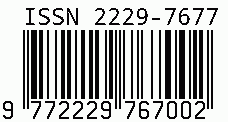
International Journal on Science and Technology
E-ISSN: 2229-7677
•
Impact Factor: 9.88
A Widely Indexed Open Access Peer Reviewed Multidisciplinary Bi-monthly Scholarly International Journal
Plagiarism is checked by the leading plagiarism checker
Call for Paper
Volume 16 Issue 3
July-September 2025
Indexing Partners



















Impact of Interdisciplinary Collaboration on Medication Safety and Diagnostic Accuracy in Elderly Polypharmacy Patients: A Retrospective Study in a Saudi Tertiary Hospital
| Author(s) | Bader A. Alnasser, Wedyan G. Alharbi, Ahmed S. Alghamdi, Saeed A. Alqahtani, Faten A. Alshalaan, Rawda A. Almuntashiri, Fatimah F. Alghamdi |
|---|---|
| Country | Saudi Arabia |
| Abstract | Background: As the population ages, polypharmacy among elderly patients in Saudi Arabia poses increasing challenges—adverse drug reactions, diagnostic delays, and repeated hospitalizations are now common outcomes. Although interdisciplinary approaches that integrate the expertise of pharmacists, radiologists, and social workers have reduced these problems in pilot projects, evidence from large tertiary care centers remains scarce. Objective: This study examined the impact of structured interdisciplinary interaction on the safety of drug regimens and the precision of diagnostic decision-making for older patients with polypharmacy in a tertiary hospital in Saudi Arabia. Methods: We performed a retrospective observational analysis of 240 inpatients aged 65 and older, each prescribed five or more medications, between January 2022 and December 2023. Based on the extent of multidisciplinary participation, patients were assigned to three cohorts: full involvement, partial involvement, or no involvement. Primary outcome measures included the frequency of medication discrepancies, imaging-documented adverse drug reactions, the elapsed time until definitive diagnosis, readmission within 30 days, and overall length of stay. Findings: Elderly patients under complete interdisciplinary management (n=88) had half the medication errors (8 versus 21), more than 15 hours shorter median diagnostic initiation (11.2 versus 26.4 hours), lower 30-day readmission (9.1% opposing 22.0%), and three fewer days in-hospital (6.7 opposing 9.4) than those without interdisciplinary input (n=50). Partially supported patients (n=102) landed averages in the middle of these two extremes. Interpretation: Formal engagement of pharmacists, radiologists, and social workers in daily rounds lowers both the harm and delays usually associated with polypharmacy in the elderly. Our data encourage broader uptake of structured team rounds in Saudi tertiary centres and align with the timing and targets outlined in Vision 2030. |
| Keywords | Polypharmacy, elderly, interdisciplinary care, medication safety, diagnostic accuracy, tertiary hospital, Saudi Arabia. |
| Published In | Volume 15, Issue 3, July-September 2024 |
| Published On | 2024-08-07 |
| DOI | https://doi.org/10.5281/zenodo.16786322 |
| Short DOI | https://doi.org/g9wngr |
Share this


CrossRef DOI is assigned to each research paper published in our journal.
IJSAT DOI prefix is
10.71097/IJSAT
Downloads
All research papers published on this website are licensed under Creative Commons Attribution-ShareAlike 4.0 International License, and all rights belong to their respective authors/researchers.

